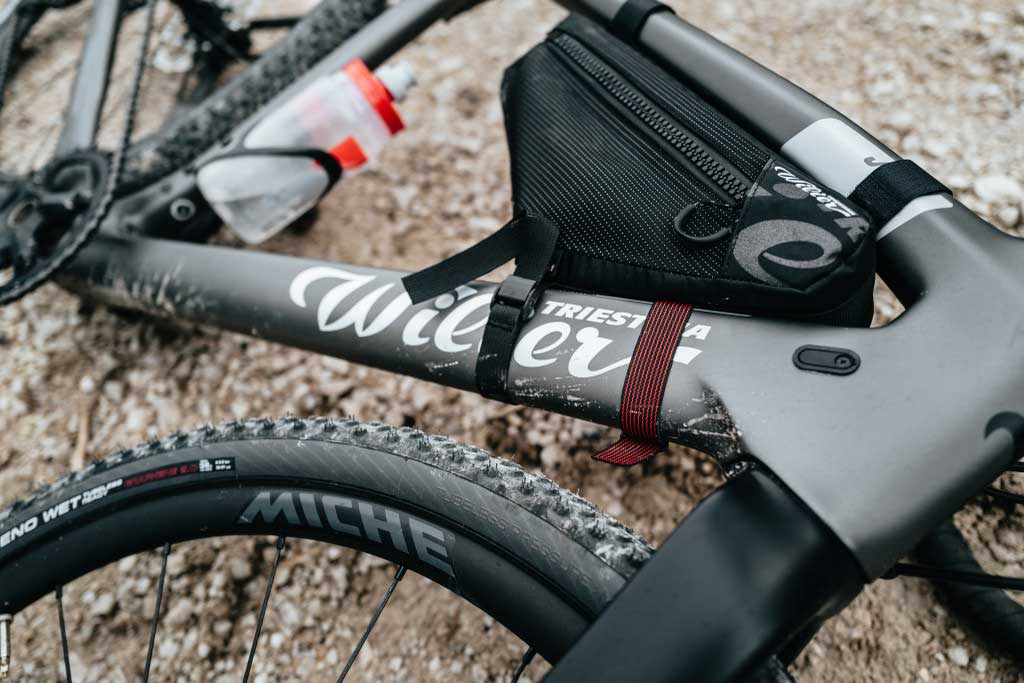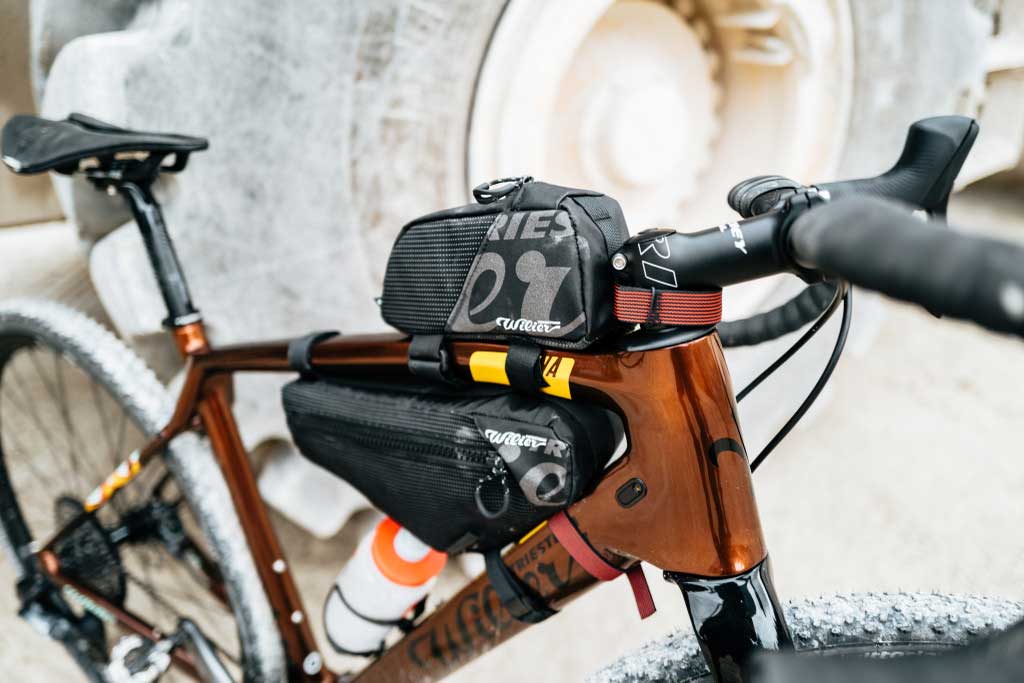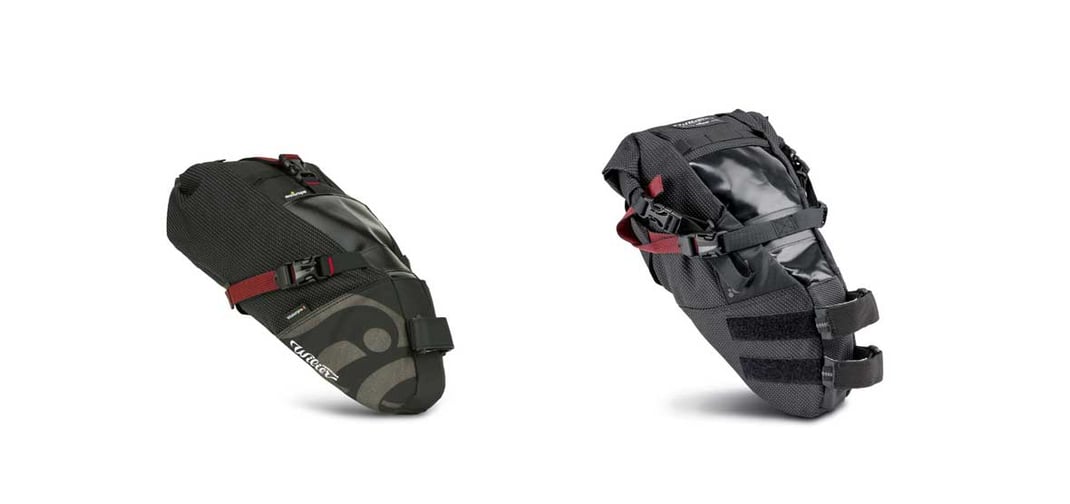- en
Bikepacking bags for your Gravel bike
Bikepacking, or more specifically, an adventure with your bike. Bikepacking means exploring. The dictionary defines explore as: to search and discover (about something), to travel to a new place to learn about it or become familiar with it.
The world from the saddle appears different. The fundamental "cyclosophical" principle, to quote Didier Tronchet, French journalist and humourist, is that "the human mind on a bicycle witnesses a shift of its opinion to the world. Outside we travel by bicycle, but inside it is the bicycle that moves us ”. In the saddle, on an adventure, alone or with friends, without outside assistance, towards new destinations. This is bikepacking: “the wind in your face that puts your ideas in order”.

Bikepacking: Bags for Gravel bikes
Getting in the saddle and carrying your equipment and supplies with you to deal with any condition (including a tent in some cases) can be a very difficult task. Bikepacking has some things in common with bike touring, but only up until a certain point. Bike touring more often than not takes routes over tarmac roads, never too extreme and within most people's reach, complete with dedicated assistance points and services.
There is a real complementary relationship between adventure gravel bikes and bikepacking bags. The bags must be resistant, waterproof, compact, but at the same time functional. Almost to the point of being indestructible. It is no coincidence that frame manufacturers have begun to collaborate with the companies that produce these type of accessories. The goal is to reduce bulk, maximise space and optimise bike / bag compatibility.
Wilier has chosen to collaborate with Miss Grape - Italian excellence in the sector - to guarantee dedicated followers of off the grid pedal adventures the best possible technical solutions.

Lightweight or Expedition?
The variation of the form of the verb bikepacking has two possible conjugations.
- Light or overnight bikepacking: allows you to set up the gravel bike or road bike according to the characteristics of the route planned and the relative speed intended. Gear is minimal, streamlined to avoid chafing while pedalling, but at the same time capacious and aerodynamic. Due to their form no special mounting options or holes are required on the frame for mounting the bags and packs. It is the ideal choice for all of us who love to travel and who intend to rest overnight, taking advantage of a hotel or a B&B along the route.
- Exploration or adventure/expedition: this is the bikepacking segment that has everything about getting off the grid adventure. Here the luggage mounting options and frame compatibility play a fundamental role. Every possible space on the bicycle counts and can make a difference when it comes to travelling in remote areas without essential or emergency services. Without the possibility of outside aid in the event of an inconvenience we need to have everything with us and onboard: repair kit, tools, first aid kit, water supplies, food, tent, sleeping bag, camping mattress, camping stove, the list can be seemingly endless. Luggage racks dedicated for gravel bikes, front and rear packs can all be valid solutions to increase the load capacity.



The four fundamental areas of bikepacking
If we look at our gravel bike frame, there are essentially four key areas (or panels) to be studied carefully if the intention is to set our bike up with some gravel bike bags.
- Saddlebag/seat pack
Under the saddle bags must be stable, anti-abrasive, tear-proof and waterproof . Due to the position on the bike they subjected to all sorts of punishment from the rear wheel. It is a real "fender bag". Bag volume can be up 20 litres, but be aware of the length: it must be equal to or greater than 10 cm. There are two attachment points: around the seatpost and on the saddle rails.
- Frame Pack
The frame pack fits inside the frames main triangle, under the top tube. However it still needs to allow easy access to the two bottle cages. The reduced dimensions and ease of use make this accessory very practical also for daily use of the bike, not just for gravel riding, but also for commuting. These packs generally have a loading capacity between 2 and 15 litres. There are also "full frame" versions capable occupying the complete space of the main triangle, however once we get toward the bigger bags it is necessary to think of an alternative for carrying water.
- Top Tube Bags
The top tube bag is a super light accessory with a load volume of two or three litres. Can also be adopted by the road cyclist and triathletes for gels and energy bars for quick easy refuelling. A durable, lightweight and convenient place to store frequently used items on any length of ride. Can be used to carry your smartphone and everyday essentials.
- Handlebar Bag
The handlebar bag must be waterproof, as during bad weather it is the accessory most exposed to the elements. It is easily recognisable due to its elongated shape and gives the maximum in terms of capacity if installed on the "drop bar" or gravel handlebars such as the woodchipper, whose form allows a greater mounting area. Depending on your needs, you can go for a classic bar bag with a transparent waterproof pocket to always have a map visible, or the so-called "roll up" with quick release buckles for ease of access and storage.
Related posts
Sign up to our newsletter
Fill in the form below for updates on all that's new in the Gravel world
If you no longer want to receive news from us, you can unsubscribe at any time.